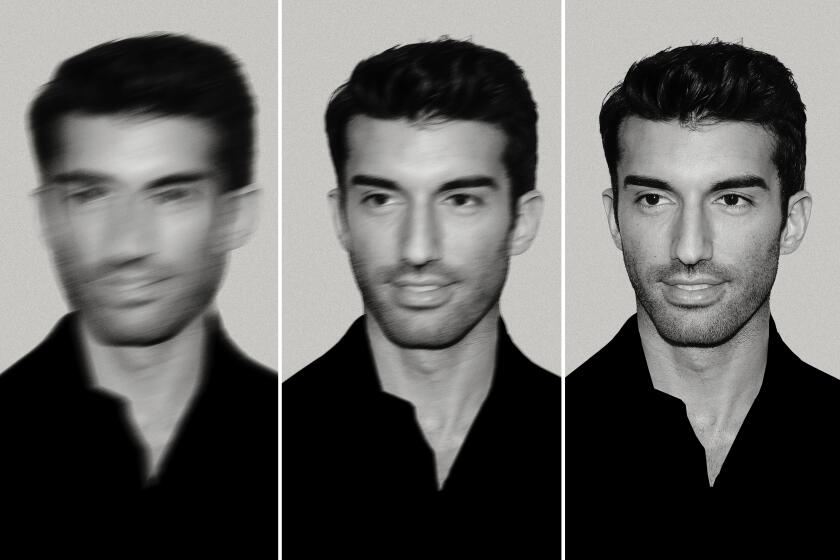A portrait of 1960s’ ‘Troublemakers’ who changed the art world landscape in a big, big way
- Share via
An involving and exciting inside look at some of the most middle-of-nowhere outdoors art ever made, “Troublemakers: The Story of Land Art” is a brief 72-minute documentary that covers a lot of territory, both literally and figuratively.
Though visitors to the Los Angeles County Museum of Art will be familiar with Michael Heizer’s outdoor “Levitated Mass,” not all of them will be able to place the artist and his work into the movement that nurtured him as confidently as this film does.
See more of Entertainment’s top stories on Facebook >>
As director James Crump informs us at the start, land art began in the mid-1960s with a radical idea that bubbled up from a group of artists and theoreticians living in hermetic Manhattan.
These men — and initially they were almost all men — dreamed a dream of art on a monumental scale, art that would be too big to fit into the puny walls of galleries. “You can’t trade for this,” Heizer says in a vintage interview. “You can’t put it in your pocket.”
Inevitably art this big, earthworks that would be made by manipulating rocks and dirt on a colossal scale, ended up in the American West, where open land was plentiful and, as one commentator says, “you could go for hours and not see anybody.”
Making expert use of archival footage and contemporary interviews with the people who were there, “Troublemakers” focuses on a trio of key practitioners who defined the early days of land art.
Robert Smithson, a friend says, “was insane, so he was easy to get along with.” His key work is 1970’s “Spiral Jetty,” a 1,500-foot construction of rocks, earth and salt that was built into Utah’s Great Salt Lake. An artist who believed in “creating something so big it’s worth dying for,” Smithson lost his life in a plane crash scouting a site for a new work.
Walter De Maria, who is quoted as saying “my new paintbrush is a Caterpillar,” is best known for his 1977 New Mexico “Lightning Field,” made up of 400 stainless steel posts placed in an area one mile by one kilometer. He talked about artworks that were so large “it was something you entered. You become part of the piece, the piece controls you.”
Heizer, the only one of the trio who is still alive, is best represented by “Double Negative,” which consists of facing trenches, each 30 feet wide by 50 feet deep, carved out of a mesa near Overton, Nev. Extensive on-site footage of “Double Negative” included in “Troublemakers” gives an idea of what potent experiences these works must be in person.
Crump also spends time discussing other people who were essential to the movement. These range from critic and theoretician Willoughby Sharp, who co-founded the influential art journal Avalanche, to Virginia Dwan, a former gallerist and patron who, as an heir to the 3M fortune, funded many of these works.
It was Dwan who donated “Double Negative” to Los Angeles’ Museum of Contemporary Art, its current owner. The piece is open 24/7, 365 days a year, but is very hard to get to, an aspect of the work that was intentional.
“It was like a new kind of religion,” fellow artist Vito Acconci explains. Instead of a cathedral, people were expected to make pilgrimages to Nevada.
Revolutionary zealots who did not necessarily get along with each other, the temperamental creators of land art took themselves very seriously. But as “Troublemakers” convincingly demonstrates, the work they produced justified their attitude.
------------
‘Troublemakers: The Story of Land Art’
No MPAA rating
Running time: 1 hour, 12 minutes
Playing: Laemmle’s Monica Film Center, Santa Monica
More to Read
Only good movies
Get the Indie Focus newsletter, Mark Olsen's weekly guide to the world of cinema.
You may occasionally receive promotional content from the Los Angeles Times.










